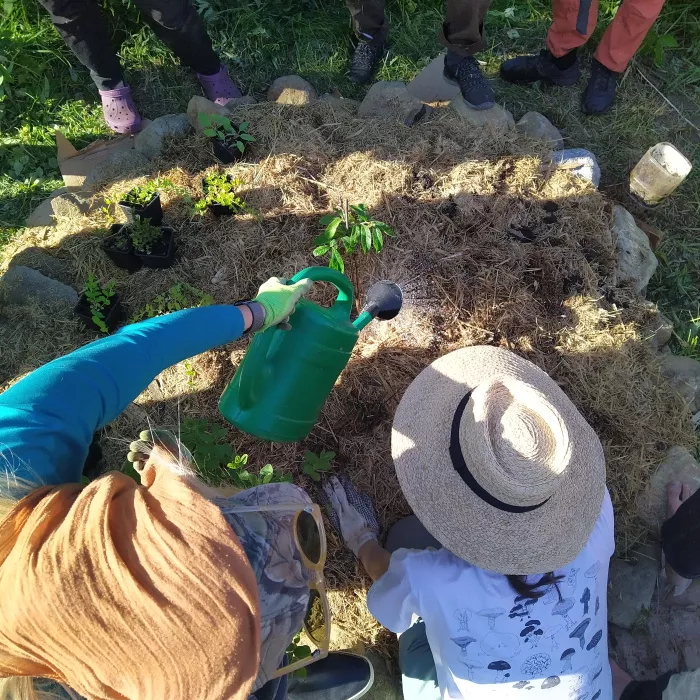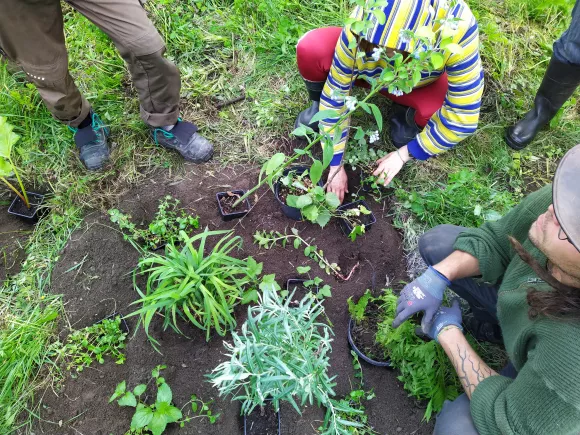Forest Gardening and Food Forestry
Forest gardening, also known as food forestry, is a sustainable and ecologically sound approach to cultivating food-producing ecosystems.
This permaculture practice is gaining popularity worldwide for its ability to create resilient landscapes that provide food, shelter, and biodiversity. In this article, we will explore the origins of the term, the differences between "food forests" and "forest gardening," the concept itself, and provide a real-world example.
The Origins of Forest Gardening and Food Forests
The concept of forest gardening dates back thousands of years, with origins in indigenous agricultural practices across the globe. It gained prominence in modern times through the works of British horticulturist Robert Hart, who advocated for the establishment of food-producing ecosystems that mimic natural forests.
The terms "food forest" and "forest gardening" are often used interchangeably, but they have subtle differences. "Food forest" primarily emphasizes the production of food in a forest-like ecosystem, while "forest gardening" refers to the broader practice of cultivating a diverse and resilient ecosystem with a focus on perennial plants, including those that provide food, medicine, and other resources.


The Concept of Forest Gardening
At its core, forest gardening is a permaculture practice that mimics the structure and function of natural forests to create resilient and productive ecosystems. This is achieved by incorporating various layers of vegetation, including:
- Canopy trees: Large fruit and nut trees that form the top layer of the garden, providing shade, habitat, and food.
- Understory trees: Smaller trees and large shrubs, often featuring fruit, nuts, or other edibles.
- Shrubs: A diverse mix of fruit and berry-producing shrubs.
- Herbaceous layer: Edible and medicinal herbs, as well as plants that attract beneficial insects.
- Ground cover: Low-growing plants that help retain soil moisture, suppress weeds, and provide habitat for beneficial organisms.
- Root layer: Plants with edible roots, tubers, or rhizomes.
- Vertical layer: Climbing plants and vines that grow on trees or other structures, making use of vertical space.
An Example of Forest Gardening
One notable example of a successful forest garden is Martin Crawford's Agroforestry Research Trust in Devon, UK. Established in 1994, this 2-acre forest garden demonstrates the potential of food forestry in temperate climates. It features over 500 edible plants, including fruits, nuts, vegetables, and herbs, as well as plants that provide medicine, fiber, and habitat for wildlife.
This forest garden showcases the benefits of adopting a forest gardening approach, such as increased biodiversity, improved soil fertility, reduced erosion, and enhanced water management. By integrating the principles of permaculture and forest gardening, the Agroforestry Research Trust has created a sustainable and productive ecosystem that serves as an inspiration for gardeners and land managers worldwide.
Another example is Stephen Barstow's homestead in Norway. You can find a presentation about his place at his PermaPuheet Lecture titled in 80 plants around the world. He is best known for his salad made of 538 varieties as well as for bringing Hablitzia tamnoides to our knowledge.
